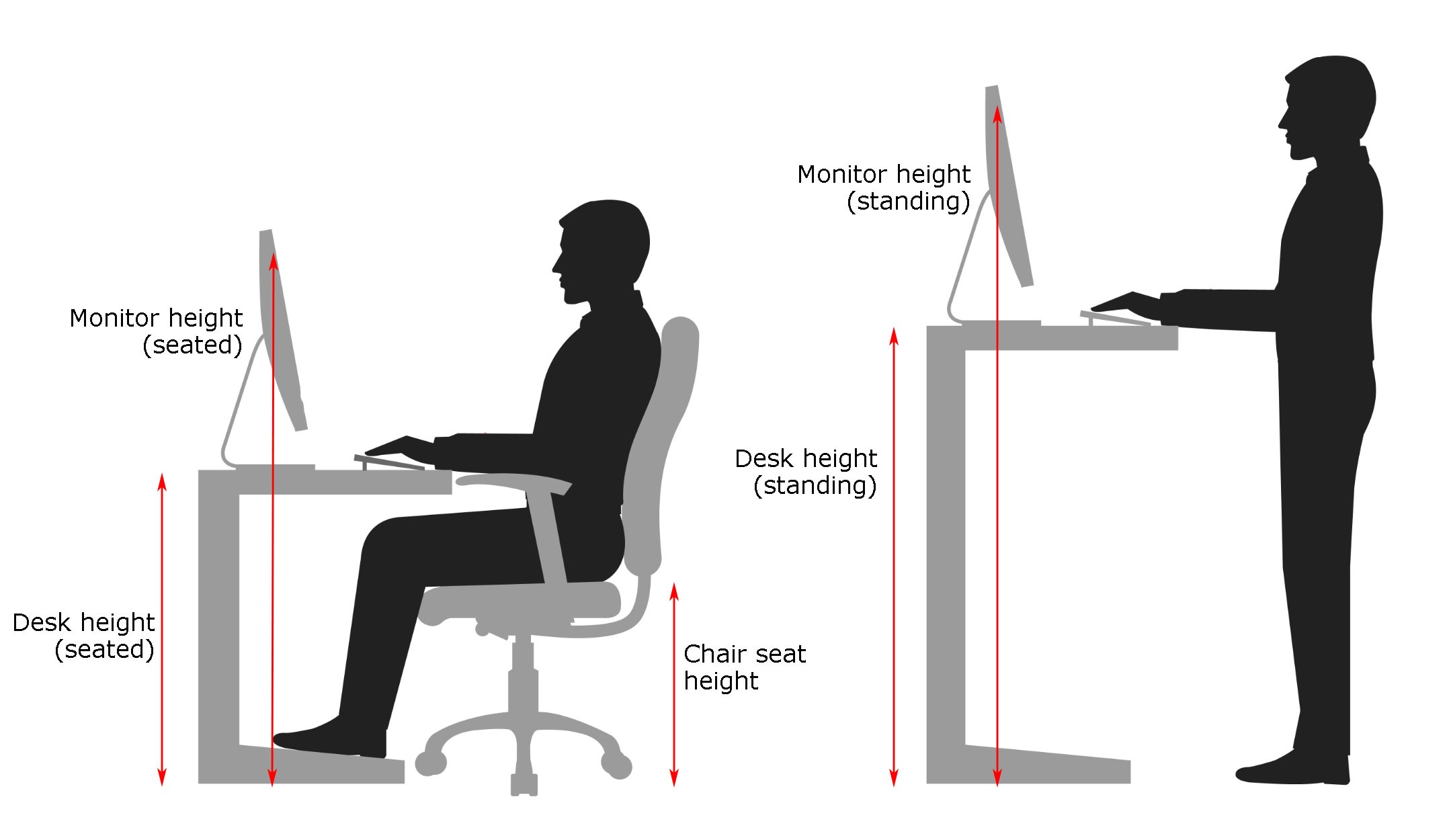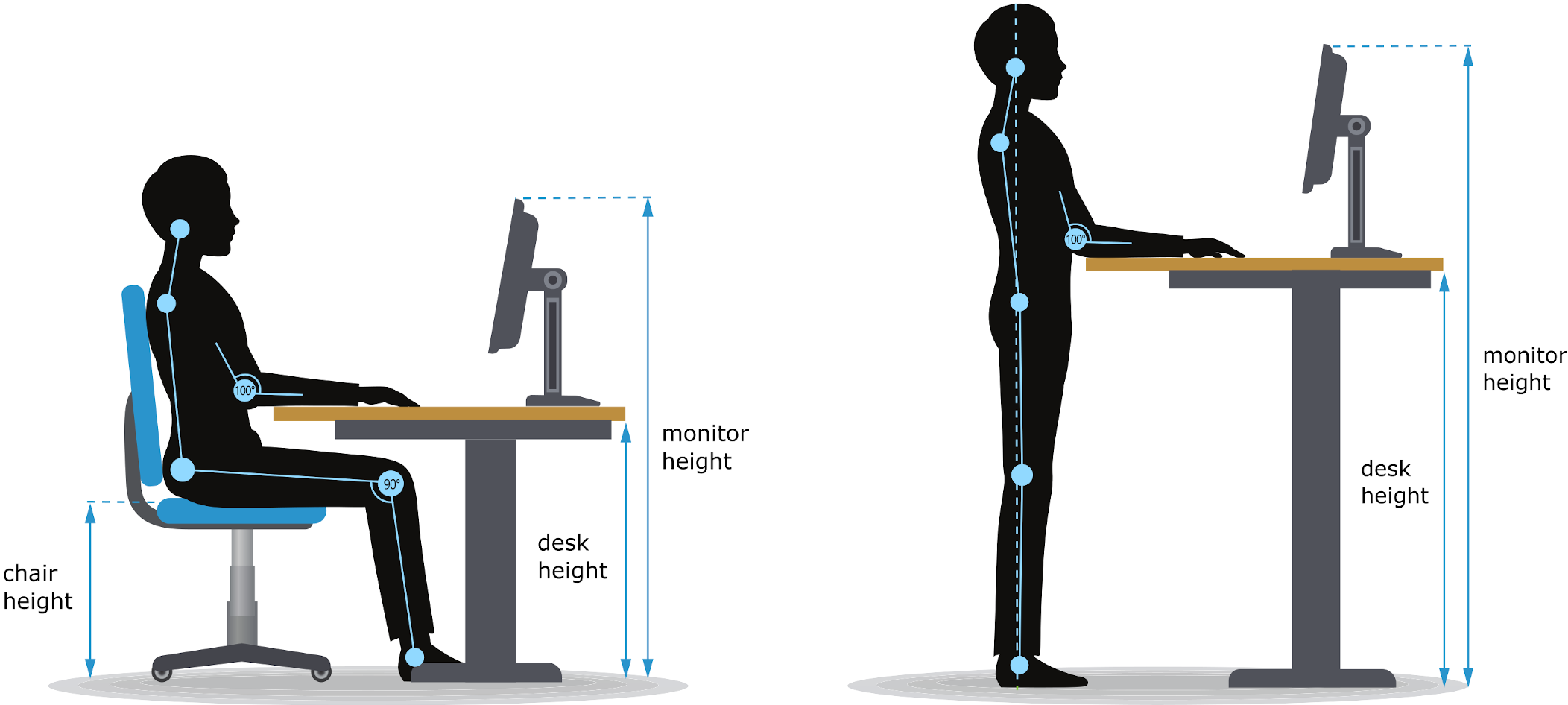Ideal Desk Chair Height for Different Body Types

Finding the perfect desk chair height is crucial for maintaining proper posture and preventing discomfort or long-term health issues. The ideal height ensures your feet are flat on the floor, your knees are bent at a 90-degree angle, and your hips are level with your knees. This seemingly simple adjustment significantly impacts your comfort and well-being throughout the workday. Chair height is intrinsically linked to your overall height and leg length; therefore, a one-size-fits-all approach is ineffective.
Desk chair height directly correlates with user height and leg length. Individuals with longer legs require higher chairs, while those with shorter legs need lower ones. For example, a person who is 5’0″ will require a significantly lower chair than someone who is 6’0″. The difference isn’t just about overall height; leg length plays a more critical role in determining the appropriate seat height. A 5’6″ individual with proportionally longer legs might need a higher chair than a 5’6″ person with shorter legs. This highlights the importance of personalized chair adjustments rather than relying on generalized recommendations.
Desk Chair Height Recommendations Based on Body Type
The following table provides a guideline for ideal desk chair height based on different height ranges. Remember that these are estimates, and individual adjustments might be necessary based on personal preferences and leg length. It’s always best to prioritize comfort and proper posture.
| Height Range | Ideal Seat Height (inches) | Recommended Knee Angle | Potential Issues with Incorrect Height |
|---|---|---|---|
| 4’10” – 5’4″ | 15-17 | 90-100 degrees | Lower back pain, rounded shoulders, poor circulation in legs, discomfort |
| 5’5″ – 5’11” | 17-19 | 90-100 degrees | Neck and shoulder strain, leg numbness, fatigue, increased risk of musculoskeletal disorders |
| 6’0″ – 6’4″ | 19-21 | 90-100 degrees | Back pain, hip discomfort, strain on knees, reduced productivity |
Proper Posture in a Correctly-Sized Chair, How tall should my desk chair be
The following description illustrates proper posture in a correctly sized chair. Imagine a person sitting upright in a chair with their feet flat on the floor. Their knees are bent at approximately a 90-degree angle, and their hips are level with their knees. The lower back rests comfortably against the backrest, maintaining the natural curve of the spine. Their shoulders are relaxed, and their head is aligned with their torso. The thighs are parallel to the floor, and there is a small gap between the back of the knees and the seat of the chair. This posture minimizes strain on the back, neck, and shoulders, promoting comfort and preventing potential injuries.
Ergonomic Benefits of Correct Chair Height Adjustment
Correctly adjusting your desk chair height offers numerous ergonomic benefits. Maintaining a 90-degree angle at the knees and hips reduces pressure on the lower back, preventing pain and promoting good posture. This alignment helps to distribute weight evenly, reducing strain on the spine and improving circulation. Proper chair height also encourages a neutral posture, reducing the risk of developing musculoskeletal disorders like carpal tunnel syndrome and repetitive strain injuries. Furthermore, comfortable posture leads to increased productivity and reduced fatigue throughout the workday, enhancing overall well-being and work efficiency.
Practical Tips for Achieving the Right Desk Chair Height: How Tall Should My Desk Chair Be

Achieving the correct desk chair height is crucial for posture, comfort, and preventing musculoskeletal issues. This involves a combination of accurate measurement, chair selection, and regular adjustments throughout the workday. Following these steps will help you optimize your workspace for maximum health and productivity.
Measuring and Adjusting Desk Chair Height
Proper measurement ensures your chair is set to the ideal height. Begin by sitting in the chair with your feet flat on the floor. Your thighs should be parallel to the floor, and your knees should be at a 90-degree angle. Your lower back should maintain its natural curve. If your feet don’t reach the floor, use a footrest. Adjust the chair’s height until these conditions are met. Many chairs offer a height adjustment lever located beneath the seat. If the chair is too high, lower it; if it’s too low, raise it. Remember, this is a personalized process; the ideal height will vary from person to person.
Chair Selection for Different Work Environments
The ideal chair differs based on the work environment and individual work style. A home office might allow for a more ergonomic, adjustable chair with lumbar support, prioritizing comfort over formal aesthetics. Corporate offices often require chairs that meet certain aesthetic standards, while still providing adequate support. For those who spend most of their day on the computer, a chair with armrests that support the forearms is beneficial, preventing strain on the shoulders and neck. Those who frequently stand up and move around might prefer a chair that’s easy to adjust and that offers good back support for those times when they do sit. For those who perform physical tasks, a more robust and durable chair is essential.
Importance of Regular Adjustments
Maintaining the correct desk chair height throughout the day is paramount. Our posture can change depending on the tasks we perform. For example, if you’re working on a detailed document, you might naturally lean forward, requiring you to slightly raise the chair. Conversely, if you’re on a phone call and need to sit back and relax, you might want to lower the chair slightly. Regular adjustments prevent stiffness, fatigue, and potential long-term health problems. Even a small shift in posture can make a significant difference in your comfort and well-being over an eight-hour workday.
